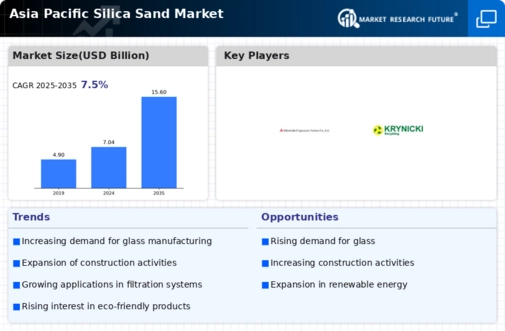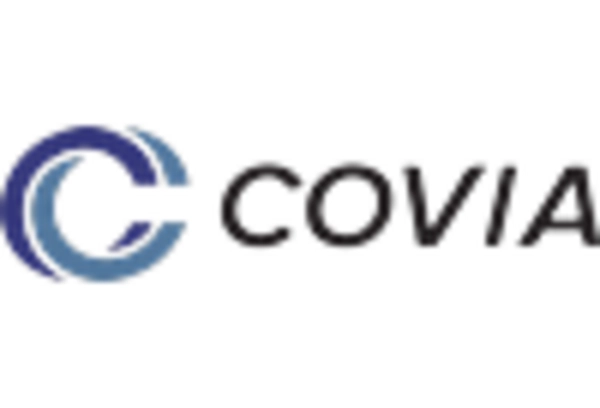Market Analysis
In-depth Analysis of Asia Pacific Silica Sand Market Industry Landscape
The Asia Pacific silica sand market is dynamic, driven by supply and demand dynamics. Glass, foundry, and construction industries use silica sand, which fluctuates in the region. Silica sand consumption is intimately tied to the construction industry, which drives Asia Pacific economic growth. As urbanization and infrastructure development increase in China, India, and Southeast Asia, construction activities require silica sand.
Silica sand extraction and processing affect market dynamics. Australia, Malaysia, and Vietnam, with vast silica sand deposits, generally dominate the market. Environmental and sustainable mining issues are increasingly affecting market dynamics. The supply chain and market are affected by industry companies adopting responsible mining techniques due to regulations and community activities.
The Asia Pacific silica sand market also depends on trade. Due to silica sand availability differences, the region has a lot of imports and exports. Export-oriented countries like Australia and Malaysia meet nearby silica sand needs. However, import-dependent economies like Japan and South Korea get their silica sand from outside sources. Trade agreements, geopolitics, and global economic conditions affect silica sand cross-border migration, changing market dynamics.
Technology is transforming the Asia Pacific silica sand market. Silicon sand manufacturing is becoming more efficient due to extraction and processing innovations, affecting the supply chain and market. Automation, data analytics, and sustainable processing are growing due to the industry's focus on environmental effect and operating expenses. These technical advances affect production and modify the competitive landscape by favoring innovative enterprises.
Silica sand's many industrial uses impact market dynamics. While building is a major consumer, electronics and solar are becoming key silica sand demand drivers. Electronic electronics and solar power technology boost silica sand applications. The diversification of end-use industries makes market dynamics more complicated since enterprises must adjust to shifting sector demands.

















Leave a Comment